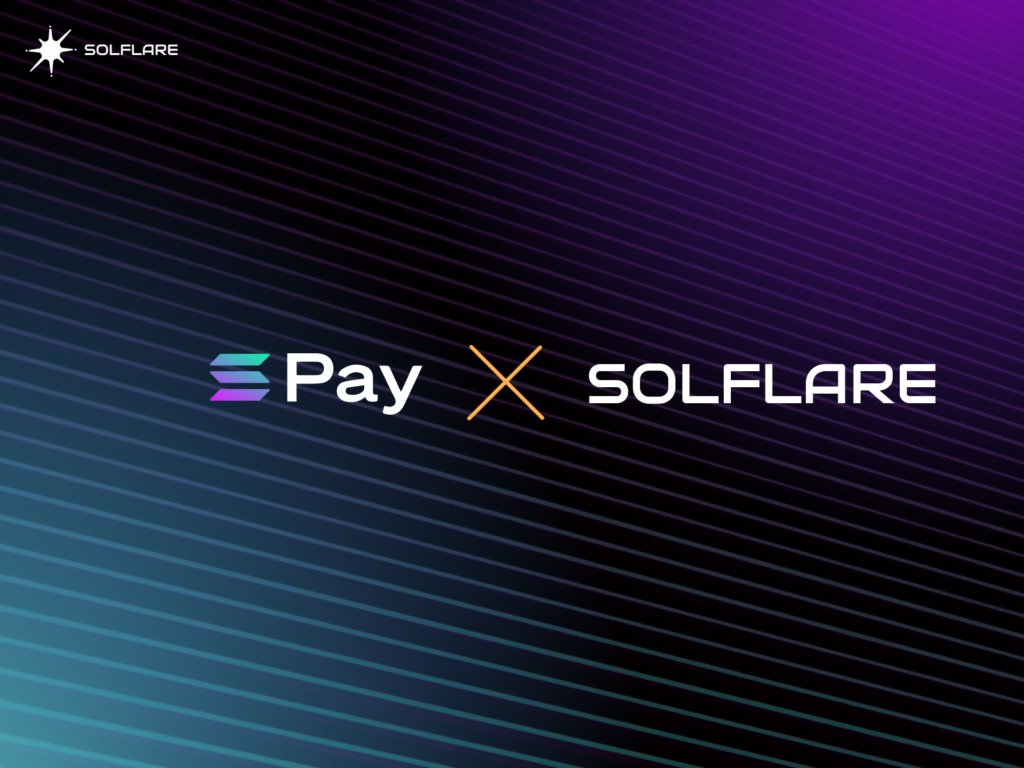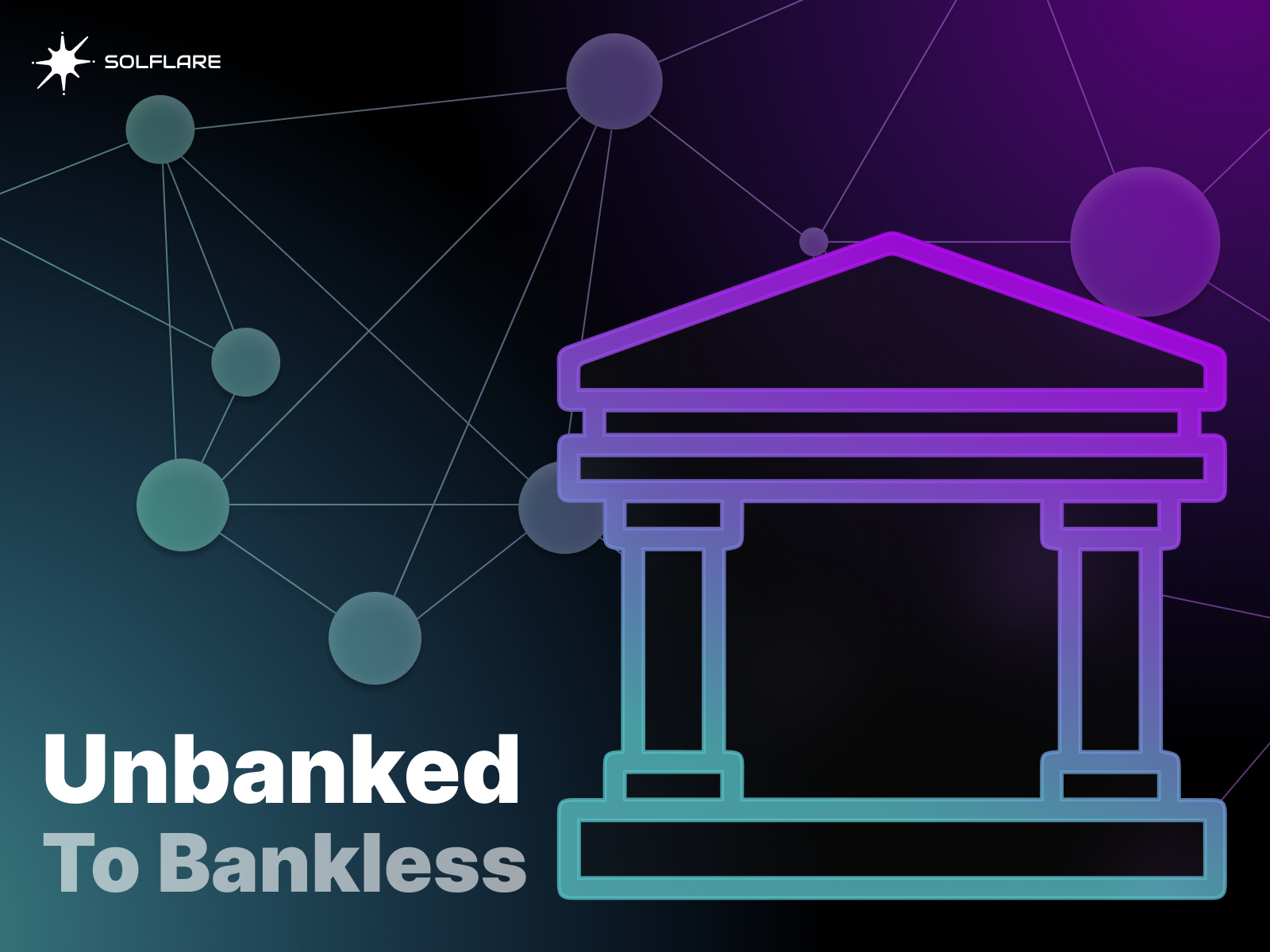Solana Pay x Solflare

The Solana blockchain was built to facilitate the fastest state changes in the world. A state change can be anything from the price of an asset changing to the balance of someone’s wallet changing. With the recent release of Solana Pay, any vendor anywhere in the world will be able to connect to the Solana blockchain and securely accept cryptocurrency payments using QR codes.
With the development of Solana Pay, Solana is now the first blockchain that enables live transactions. You can use SOL or other cryptocurrencies like wETH or wBTC to pay for goods or services and settlement times are as fast as Visa and Mastercard. Because of its speed and security, Solana-based cryptocurrencies can now be used as modern-day money at your local coffee shop, your favorite online retailer, and virtually any good or service that accepts Solana Pay.
Commerce and Disruption
While cryptocurrencies have been the butt of many jokes made by TradFi professionals, the blockchain hasn’t. The technology behind blockchains and what they enable has consistently been touted as a massively disruptive force for many industries. Commerce and eCommerce are no different.
Companies like Boson are building isolated protocols that attempt to infiltrate the walled garden of commerce and e-commerce networks but Solana Labs took a different approach. They realized the blockchain itself is all you need to facilitate disruption in global commerce.
Enabling individuals to purchase physical items in person with a non-custodial wallet is revolutionary. With Solana Pay, all the customer has to do is scan a QR code and approve a transaction. No longer do customers and vendors have to rely on the Visa and Mastercard networks – or any centralized payment network for that matter.
Counterparty Risk or a Lack Thereof
Transactions on the Visa and Mastercard networks account for over 60% of all debit and credit purchases in the world. If these networks ever go down and balance history is unrecoverable, who knows what would happen. Especially in regards to credit and debt – who would owe what to who?
When you use Solana Pay, you are not relying on any centralized service that is a single point of failure but rather a decentralized network of validators. Each transaction and balance is fortified as an immutable piece of public record. Immediately after it takes place, its details can be found on any Solana blockchain explorer like Solscan.
FAQ
Can’t the Validators Stop the Network?
While validators can become too powerful or collude to cause havoc, the likelihood of that decreases as new validators join the network and as stakers become more intelligent with where they delegate their coins.
Solflare and Marinade recently partnered up to offer the ability for Solflare users to seamlessly stake their SOL through Marinade in return for mSOL. Marinade distributes delegated tokens to a network of over 450 validators which effectively secures the Solana network.
It is also exceedingly expensive to try to overtake a blockchain. It could cost more money than any profit that would be made.
Is it up and running?
Yes. Solana Pay is live but it has not been widely adopted by merchants (yet). Once more merchants implement it as part of its payment system, you will be able to use your Solflare wallet to buy anything your heart desires – not just digital assets. Wen lambo?
I know Visa and Mastercard charge 1-3% per transaction to their vendors, who then have to charge higher prices to the consumer to cover that. How is Solana Pay any different? Aren’t there high gas fees like Ethereum?
Transactions on Solana cost a fraction of a penny. You can make 1,000,000 transactions and pay about $5-10 in fees. With Solana Pay, merchants don’t have to charge you just to cover their payment expenses.
Ethereum does have high gas prices but Solana’s low fees are just one reason why it makes sense to build a payment rail network on Solana instead of Ethereum.
Is it Scalable? I mean, Bitcoin can only handle like 5-10 transactions per second.
True, Bitcoin can handle only a handful of transactions per second. Ethereum can handle anywhere from 10-30 and Visa can handle about 50,000.
Solana can handle upwards of 65,000 transactions per second and will be able to handle more as computing power increases. It’s pretty scalable.
Will vendors understand how to even set this up?
The setup for the vendor is super simple. Here’s a great guide put together by the Pointer team that details exactly how vendors should set it up.
When reading, just substitute Solflare every time you see the word Phantom 😉.
What about the environment? Aren’t blockchains bad?
Blockchains are not bad. As for their environmental effects, it depends on how the blockchain operates. Bitcoin annually uses the same amount of energy as a small to medium size country.
Solana, on the other hand, is carbon neutral due to it being a hybrid of Proof of Stake and Proof of History – which require very little energy to operate.
Ok, I think you’ve convinced me.
Yea now you can buy NFTs of eggs on Magic Eden while also buying real eggs at a store.
It’s a win-win.
Conclusion
Before, anyone in the world could trustlessly transact digital assets anywhere at any time using cryptocurrencies and blockchains, and now, the same can be said for physical assets.
Rather than trusting your bank to transfer the funds to Visa or Mastercard and trusting Visa or Mastercard to transfer your funds to a vendor, you are directly paying the vendor and can verify the transaction immediately.
This Solana Pay network is a logical evolution of the Solana blockchain and with Solflare’s help, it can disrupt global payment networks for the better.
